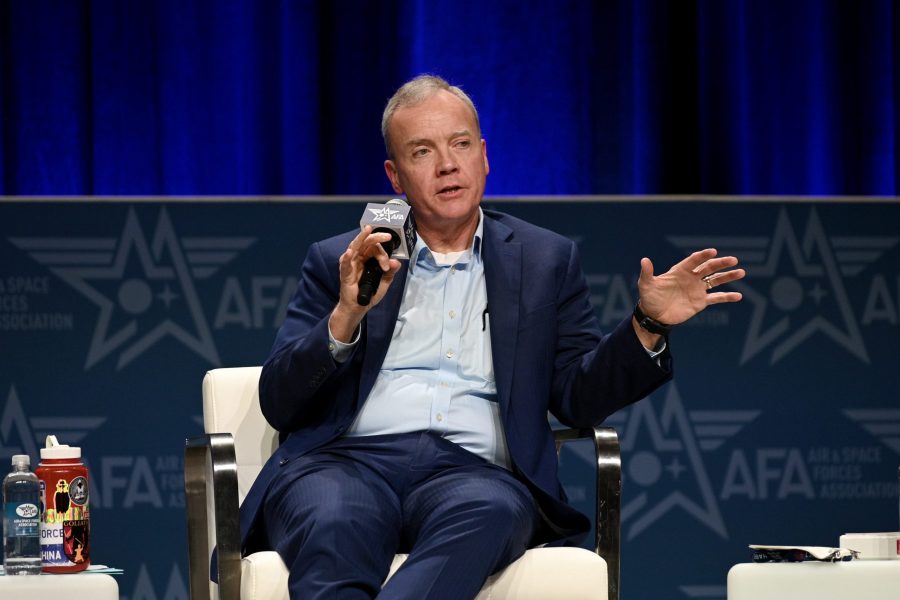The Department of the Air Force officially established the new Integrated Capabilities Office last week, completing one of the first of two dozen moves announced in February to “re-optimize” the Air and Space Forces for Great Power Competition with China.
Special assistant to the Secretary Tim Grayson heads the new office, which a department spokeswoman said will be resourced for a staff of 10 by the end of this calendar year.
Still to come are other new organizations announced in February: the new Integrated Capabilities Command and Space Futures Command, which Air Force Chief of Staff Gen. David W. Allvin has said will stand up by the end of 2024, and Space Futures Command, which Lt. Gen. Philip A. Garrant, head of Space Systems Command, has said could stand up as soon as this summer.
The Integrated Capabilities Office officially opened on July 19, according to a July 26 announcement, which said the office will focus on fulfilling Air Force Secretary Frank Kendall’s seven Operational Imperatives. These key requirements laid out in March 2022 focused Kendall’s objective to rapidly “deliver meaningful operational capability to the warfighter.”
“The Integrated Capabilities Office will directly support the Department of the Air Force senior leadership team as we develop our integrated modernization plans for the Air Force and Space Force,” Kendall said in the announcement. “China, our pacing challenge, is modernizing its military with the intent to defeat U.S. power projection capabilities. We will not let that happen.”
The office will also play a key role in sorting out priorities for developing capabilities and setting requirements—it will work closely with acquisition officials, the Air Force’s new Integrated Capabilities Command, and the new Space Futures Command to figure out synergies between the services and the different programs they are pursuing, then present recommendations to senior leadership.
The new office will examine “capabilities across our services, not in stovepipes,” said then-Acting Undersecretary Kristyn E. Jones in February. “This organization will help us to prioritize our investments and will be responsible for working with us to determine the next iteration of Operational Imperatives.”
Working closely with “Integrated Development Campaign Teams” staffed by personnel from Integrated Capabilities Command, Space Futures Command, Air Force Materiel Command’s new Integrated Development Office, and Space Force acquisition organizations, the office will oversee the department’s most important modernization initiatives.
“The campaign teams will work imperative problem sets and provide data-driven solutions and recommendations,” the release stated. “The ICO will incorporate these results into prioritized recommendations for modernization and will collaborate with other organizations to integrate these priorities, along with other portfolios, into the budgeting process.”
Among a host of new organizations being formed to oversee the re-optimization effort, the ICO will provide Secretariat-level oversight and analysis. Kendall acknowledged in February that this will lead to conflict as different offices and organizations present competing visions. advocate for their view.
“That’s intentional,” Kendall said in February. “That’s how you identify the biggest issues and bring them directly up to the top leadership for resolution.”
Doing so should fuel “highly collaborative and unfiltered recommendations,” the Air Force release said.
